New Faculty 2017-2018
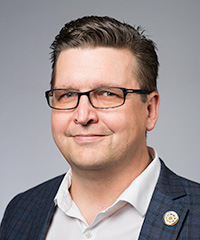
P. Scott Carney
Director and Professor, The Institute of Optics
Scott Carney joins the University after serving as a professor of electrical and computer engineering at the University of Illinois at Urbana–Champaign. A Rochester alumnus, he earned his PhD in physics, studying under Emil Wolf. Carney was a postdoctoral associate at Washington University in St. Louis for two years before joining the University of Illinois in 2001.
Carney plans to build on the initiatives of his predecessor, Xi-Cheng Zhang, to create a strong undergraduate program and involve faculty in the institute’s governance. A theorist who has written seminal papers on near-field inverse scattering, Carney bridges the gap between pure and applied research.
Among his innovations is a handheld medical diagnostic probe that uses near-infrared light waves rather than ultrasound. The device is produced by Diagnostic Photonics Inc., a start-up that Carney co-founded and serves as chief scientific officer.
PhD: University of Rochester
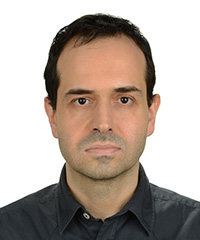
Müjdat Çetin
Associate Professor, Department of Electrical and Computer Engineering
Müjdat Çetin joins Rochester as an associate professor from Sabanci University in Istanbul, Turkey, where he has been a faculty member since 2005. Before that, he was with the Laboratory for Information and Decision Systems at MIT. Çetin has held visiting faculty positions at MIT, Northeastern University, and Boston University.
His research interests include data, signal, and imaging sciences, with crossdisciplinary links to areas in electrical engineering, computer science, and neuroscience. His research group has made advances in three key areas: computational sensing and imaging as applied to radar and biomedical imaging; probabilistic methods for image and video analysis as applied to biomedical image analysis, microscopic neuroimaging, and computer vision; and signal processing and machine learning for brain-computer/machine interfaces, with applications for alternative communication and rehabilitation for patients and monitoring of cognitive states.
Çetin has had leadership and organizational roles from several international conferences. He was one of the keynote speakers for the 2015 International Workshop on Compressed Sensing Theory and Its Applications to Radar, Sonar, and Remote Sensing. Çetin is currently serving as the vice chair of the IEEE Computational Imaging Special Interest Group.
PhD: Boston University
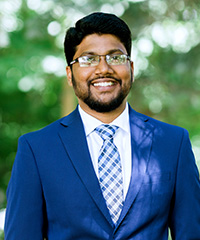
Ranga Dias
Assistant Professor, Department of Mechanical Engineering
Ranga Dias joins the University after a postdoctoral fellowship in the Department of Physics at Harvard University.
An experimental extreme condensed matter physicist, Dias has a background in materials science and engineering. His research focuses on materials at extreme pressure and temperature conditions, a field that explores new materials, novel phenomena, and exotic states of matter. His main interests are high temperature superconductivity, magnetism, and superfluidity in the vicinity of quantum phase transitions. His research efforts are also directed toward utilizing high pressure and temperature conditions to understand chemical processes and interactions to synthesize novel advanced materials, such as high energy density materials, superhard solids, and quantum materials.
During his three-year postdoctoral appointment, Dias helped lead a team that discovered solid metallic hydrogen, a state of hydrogen that’s predicted to have exotic properties, such as room temperature superconductivity and superconducting superfluidity.
Dias has published in journals such as Science, Physical Review Letters, the Proceedings of the National Academy of Sciences USA, and Nature Scientific Reports.
PhD: Washington State University
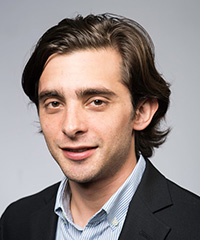
Marc Porosoff
Assistant Professor, Department of Chemical Engineering
Marc Porosoff joins the Rochester faculty after an appointment as an NRC postdoctoral research associate at the U.S. Naval Research Laboratory in Washington, D.C. At NRL, he studied catalysts for CO2 hydrogenation as part of the “Seawater to Fuel” project.
At Rochester, Porosoff plans to investigate new catalysts for converting abundant C1 and C2 resources (CO2, CO, CH4, C2H6) into chemicals and fuels. Understanding the relationships between chemical reactivity and catalyst electronic/structure properties are extremely important for developing catalysts that exploit particular reaction pathways. This approach requires controlled synthesis of catalysts combined with kinetic reactor studies and in situ techniques. In particular, his research targets replacement of precious metals with low-cost, alternative catalysts for CO2 utilization and conversion of shale gas into value-added chemicals and fuels.
PhD: Columbia University
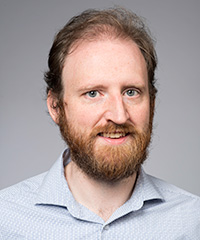
William Renninger
Assistant Professor, Institute of Optics
William Renninger joins the University from Yale University, where he was an associate research scientist and a postdoctoral associate in the Department of Applied Physics. Previously, Renninger was a postdoctoral associate in the School of Applied Physics at Cornell University.
Renninger studies experimental nonlinear optics to explore the ways in which light and matter interact as well as to identify and develop successful commercialized technologies. With expertise on ultrafast optical and novel optomechanical phenomena, Renninger will form a research group equipped to explore contemporary problems in nonlinear optics. Initial areas of focus will include nonlinear pattern formation, arbitrary ultrashort pulse generation, multimode nonlinear optics, and traveling-wave optomechanics. The group will apply their results to technologies ranging from high performance optical sources and silicon photonics to the rapidly evolving area of quantum information technology.
PhD: Cornell University
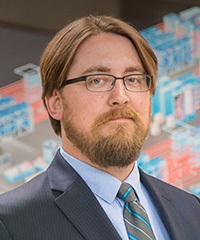
Adam Sefkow
Assistant Professor, Department of Mechanical Engineering and Senior Scientist, Laboratory for Laser Energetics
Adam Sefkow joined the faculty in 2016 after serving as a principal member of the technical staff in the Pulsed Power Sciences Center at Sandia National Laboratories. He has made scientific contributions on a range of topics, including magnetoinertial fusion, short-pulse and long-pulse laser-plasma interaction physics, and intense charged-particle beam transport.
He has also provided leadership toward establishing predictive capability through his collaborations with experiments at all three of the nation’s flagship high-energy-density facilities.
Sefkow recently received a prestigious Early Career Research Program award from the Department of Energy’s Office of Fusion Energy Sciences to help develop a hybrid fluid-kinetic multi-physics simulation code to help interpret data acquired from high-energy-density physics and inertial confinement fusion experiments at the University’s Omega Laser Facility, the National Ignition Facility, and the Z Pulsed Power Facility.
PhD: Princeton University
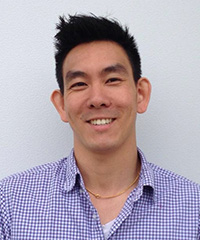
Stephen Wu
Assistant Professor, Department of Electrical and Computer Engineering
Wu joins the faculty from Argonne National Laboratory, where he was a postdoctoral scholar in the Materials Science Division. While at Argonne, he worked on using new magnetic materials for both energy generation and other applications.
His research interests involve merging the world of quantum materials science with nanoscale electronic device engineering to create the next generation of faster, smaller, and more energy-efficient electronic devices. The multifaceted and developing field lies at the intersection between traditional electrical engineering, materials science, and experimental condensed matter physics.
At Rochester, he will explore novel devices for nanoscale spin transport, complex oxide thin film materials synthesis for functional quantum electronics, and 2-D electronic systems for controllable topological electronic devices.
PhD: University of California–Berkeley
